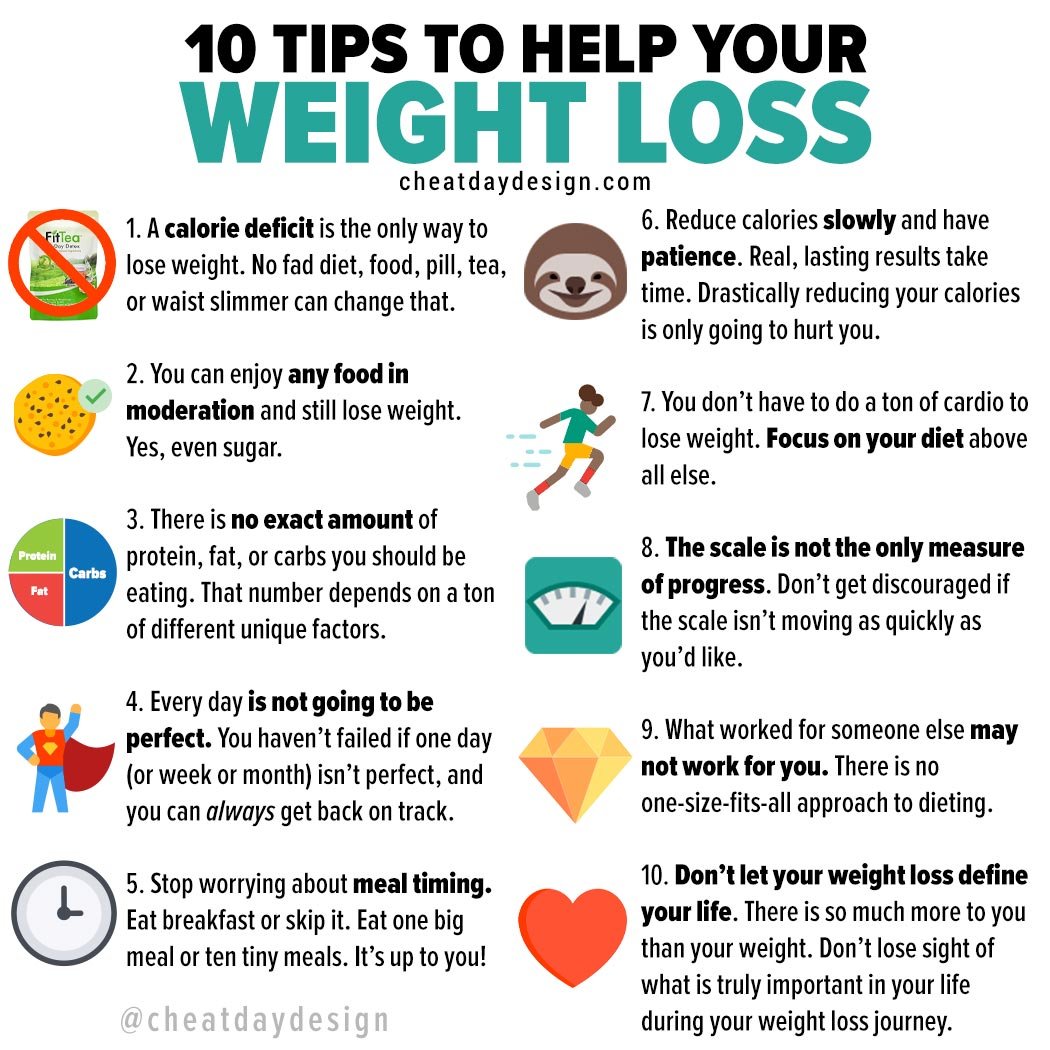
5 Tips for Losing Weight on a Budget
5 Tips for Losing Weight on a Budget – It’s a common misconception that healthy eating and weight loss require breaking the bank. You can achieve your weight loss goals without sacrificing your financial well-being. This guide will provide practical tips and strategies to help you shed pounds without straining your budget.
From prioritizing whole foods to meal prepping and smart shopping, we’ll explore a range of approaches that can help you stay on track with your weight loss journey without breaking the bank. Whether you’re looking for affordable recipes, tips for maximizing your grocery budget, or ways to incorporate physical activity into your routine, this guide has you covered.
Prioritize Whole Foods

Prioritizing whole foods is a cornerstone of any budget-friendly weight loss plan. These unprocessed, nutrient-rich foods are naturally filling, helping you feel satisfied while consuming fewer calories. Whole foods are packed with essential vitamins, minerals, and fiber, which support your overall health and well-being.
These nutrients help regulate your metabolism, promote satiety, and prevent cravings, making it easier to stick to your weight loss goals.
Sticking to a budget while trying to lose weight can be tough, but it’s definitely doable! From meal prepping to finding affordable workout options, there are plenty of ways to stay on track. And speaking of staying on track, did you know that exercise helps your memory as you age ?
It’s a great way to keep your mind sharp while also shedding those extra pounds. So, get moving and start making those healthy choices, both for your body and your brain!
Affordable Whole Foods
Here’s a list of affordable whole foods that are rich in nutrients and filling:
- Fruits and Vegetables:Fruits and vegetables are incredibly affordable, especially when purchased in season. They’re packed with fiber, vitamins, and minerals, which help you feel full and energized.
- Legumes:Beans, lentils, and peas are protein powerhouses and excellent sources of fiber. They’re incredibly versatile and can be used in soups, stews, salads, and even as meat substitutes.
- Whole Grains:Brown rice, quinoa, oats, and whole-wheat bread are excellent sources of complex carbohydrates, fiber, and essential nutrients. They provide sustained energy and help you feel fuller for longer.
- Nuts and Seeds:Almonds, walnuts, sunflower seeds, and pumpkin seeds are packed with healthy fats, protein, and fiber. They make a great snack or addition to salads and yogurt.
- Eggs:Eggs are an affordable source of protein, vitamins, and minerals. They can be cooked in various ways and are a versatile ingredient for breakfast, lunch, and dinner.
Maximizing Nutritional Value
Smart cooking techniques can help you maximize the nutritional value of whole foods:
- Steaming:Steaming vegetables preserves their nutrients and flavor. It’s a simple and healthy cooking method that requires minimal oil.
- Roasting:Roasting vegetables brings out their natural sweetness and creates a crispy texture. It’s a great way to cook large batches of vegetables for meal prepping.
- Sautéing:Sautéing vegetables in a small amount of healthy oil, like olive oil, can be a quick and flavorful cooking method.
- Boiling:Boiling is a simple and effective way to cook legumes and grains. You can also use the broth for soups and stews, adding extra flavor and nutrients.
Meal Planning and Prep: 5 Tips For Losing Weight On A Budget
Meal planning is a crucial step in losing weight on a budget. It helps you stay organized, prevent impulse purchases, and avoid unhealthy snacking. By planning your meals in advance, you can ensure that you have nutritious and affordable options readily available throughout the week.
Sticking to a budget while losing weight can be tough, but it’s totally doable! One of the biggest challenges I find is managing the stress of it all, which can easily lead to unhealthy coping mechanisms. If you’re struggling with anxiety, it’s important to understand the different types and learn effective coping strategies.
You can find some helpful tips on common types of anxiety and how to cope. Once you have a better handle on your anxiety, you can focus on those budget-friendly weight loss goals, like meal prepping and finding free or low-cost ways to stay active.
Sample Weekly Meal Plan
A sample weekly meal plan can be a helpful guide to get started. Here is a budget-friendly meal plan that incorporates diverse, nutritious ingredients:
- Monday:Lentil Soup with Whole-Wheat Bread, Salad with Vinaigrette
- Tuesday:Chicken and Vegetable Stir-Fry with Brown Rice
- Wednesday:Black Bean Burgers on Whole-Wheat Buns, Sweet Potato Fries
- Thursday:Salmon with Roasted Vegetables and Quinoa
- Friday:Vegetarian Chili with Cornbread
- Saturday:Leftovers from the week
- Sunday:Breakfast for Dinner – Scrambled Eggs with Avocado Toast
Preparing Meals in Advance
To make healthy eating easier and more convenient, consider preparing meals in advance. Here is a step-by-step guide to meal prep for a busy week:
- Choose Your Recipes:Select recipes that can be easily prepped and stored. Look for recipes that use similar ingredients to reduce grocery shopping trips.
- Make a Grocery List:Create a detailed grocery list based on your chosen recipes. This helps you stay organized and avoid impulse purchases.
- Shop for Ingredients:Shop at discount grocery stores or buy in bulk when possible to save money. Look for seasonal produce for the best deals.
- Prep Your Ingredients:Wash, chop, and measure all your ingredients. This will save you time during the week.
- Cook Your Meals:Prepare your meals in advance, cooking in large batches. Store them in airtight containers in the refrigerator or freezer.
- Reheat and Enjoy:Reheat your meals throughout the week. You can reheat them in the microwave, oven, or stovetop.
Cook More, Eat Out Less

Eating out can be a delicious treat, but it can also be a major drain on your budget. When you’re trying to lose weight on a budget, cooking at home is a much more affordable and often healthier option.
Financial Benefits of Cooking at Home, 5 tips for losing weight on a budget
Cooking at home can save you a significant amount of money compared to dining out. The average cost of a meal at a restaurant is around $15-$20, while a home-cooked meal can cost as little as $5-$10. That’s a difference of $10-$15 per meal, which can add up quickly.
For example, if you eat out three times a week, you could be spending $105-$150 per week on food alone. By cooking at home, you could save $35-$75 per week, which is $1,820-$3,900 per year!
Sticking to a budget while trying to lose weight can be tricky, but it’s totally doable! Focus on whole foods, like fruits, veggies, and beans, which are naturally low in calories and high in fiber. Remember to read labels carefully and compare prices to find the best deals.
If you’re looking to increase your carb intake with healthy options, check out this article: ask the rd how can i increase carbs with healthy options. And finally, don’t be afraid to cook at home! It’s a great way to save money and control your portion sizes.
Budget-Friendly Recipes
Finding delicious and healthy recipes on a budget doesn’t have to be difficult. There are plenty of affordable ingredients that can be used to create satisfying meals. Here are a few tips for finding budget-friendly recipes:
- Look for recipes that use seasonal ingredients. These are often more affordable than out-of-season produce.
- Check out your local farmers’ markets for fresh, affordable produce.
- Use pantry staples like beans, lentils, rice, and pasta as the base of your meals.
- Don’t be afraid to get creative with leftovers. You can turn leftovers into new meals, reducing food waste and saving money.
Cost Comparison: Restaurant Meals vs. Homemade Alternatives
Here’s a table comparing the cost of some popular restaurant meals to their homemade alternatives:
| Restaurant Meal | Cost | Homemade Alternative | Cost |
|---|---|---|---|
| Chicken Caesar Salad | $12-$15 | Grilled Chicken Salad with Romaine Lettuce, Parmesan Cheese, and Homemade Dressing | $5-$7 |
| Pasta with Marinara Sauce | $10-$13 | Pasta with Homemade Marinara Sauce (using canned tomatoes, garlic, and herbs) | $3-$5 |
| Burger and Fries | $10-$15 | Homemade Burger with Sweet Potato Fries | $4-$6 |
Smart Shopping Strategies
Smart grocery shopping strategies can significantly reduce your food expenses, making it easier to stick to your budget while maintaining a healthy diet. By adopting these techniques, you can save money without compromising on quality.
Buying in Bulk
Buying in bulk can be a cost-effective strategy, especially for frequently used pantry staples like rice, beans, oats, and nuts. These items have a longer shelf life and can be stored for extended periods, minimizing waste. However, it’s important to consider your storage space and consumption rate before purchasing large quantities to avoid unnecessary waste.
Using Coupons and Discounts
Coupons and discounts are excellent ways to save money on groceries. Many stores offer weekly flyers and online coupons, and you can also find printable coupons on websites dedicated to couponing. Additionally, take advantage of store loyalty programs and sign up for email newsletters to receive exclusive deals and promotions.
Seasonal Produce
Seasonal produce is generally cheaper and fresher than out-of-season options. Check local farmers markets and grocery store flyers for information on what’s in season and plan your meals accordingly. This will help you enjoy the best quality produce at the most affordable prices.
Avoiding Food Waste
Food waste is a significant contributor to grocery expenses. To minimize waste, consider these strategies:
- Plan your meals:Create a weekly meal plan and make a shopping list based on those plans. This will help you buy only what you need and reduce the risk of impulse purchases.
- Store food properly:Store fruits and vegetables in the refrigerator to extend their shelf life. Use airtight containers to prevent spoilage and label items with dates to ensure you use older items first.
- Use leftovers creatively:Transform leftovers into new dishes to avoid throwing them away. For example, leftover chicken can be used in salads, soups, or sandwiches.
- Compost food scraps:Composting food scraps reduces waste and provides nutrient-rich soil for your garden.
Budget-Friendly Grocery Stores
Several grocery stores offer discounts and promotions to help you save money. Consider these options:
- Discount supermarkets:Stores like Aldi and Lidl offer a wide selection of affordable groceries, often at lower prices than traditional supermarkets.
- Warehouse clubs:Membership-based stores like Costco and Sam’s Club offer bulk discounts on a wide range of products, including groceries. However, membership fees should be considered.
- Online grocery delivery services:Several online grocery delivery services offer discounts and promotions, including free delivery for first-time customers or on specific orders.
Conclusion

Remember, losing weight on a budget is about making smart choices, not sacrificing your health or your wallet. By incorporating these tips into your daily routine, you can achieve your weight loss goals while staying within your budget. It’s about making sustainable changes that fit your lifestyle and finances.
So, embrace the journey, stay motivated, and enjoy the process of becoming a healthier, happier you!






